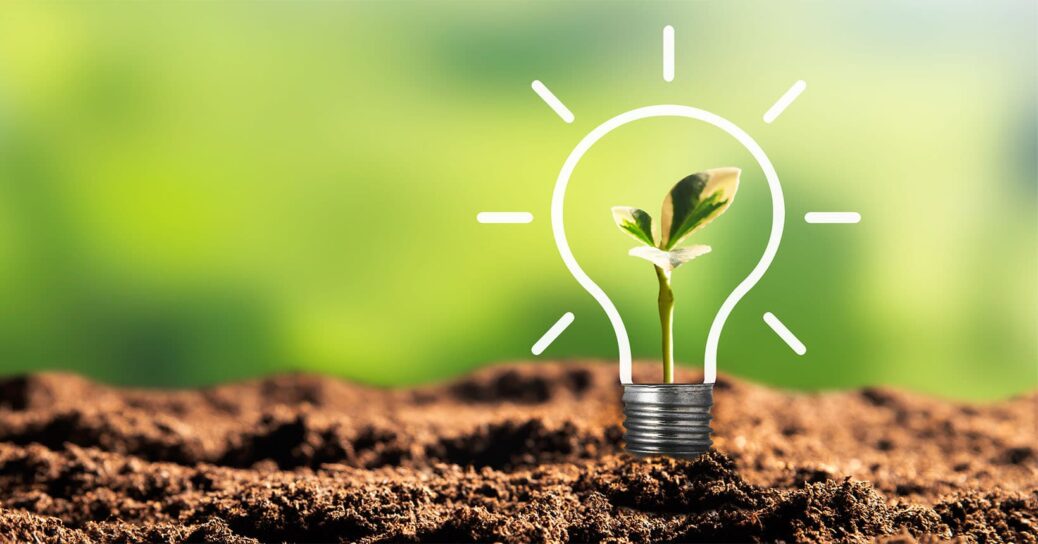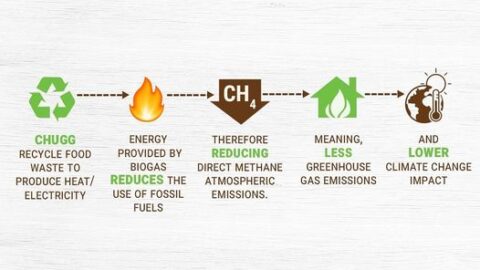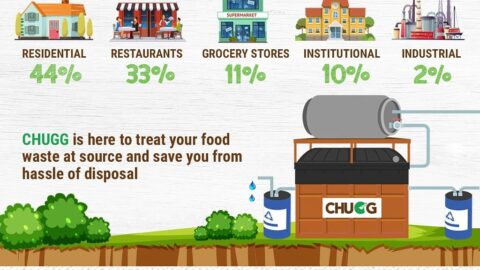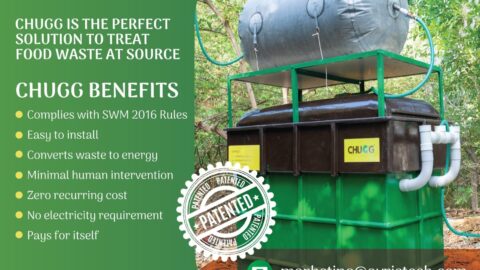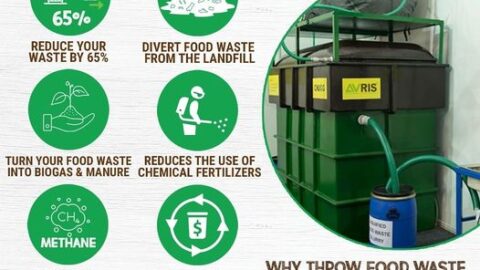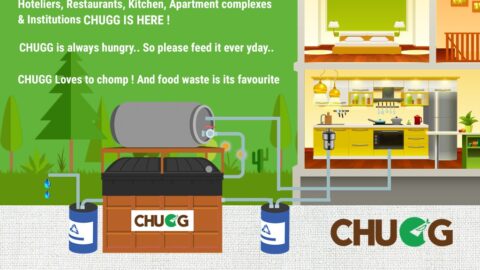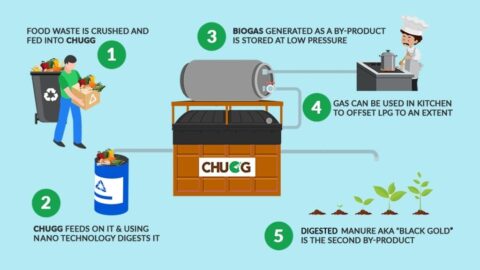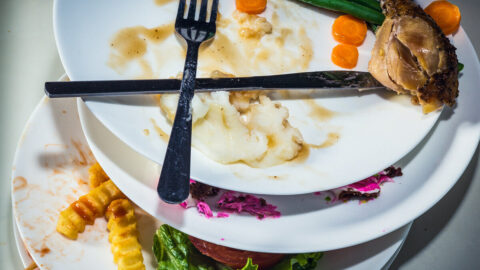Over 70% of the world’s food waste is sent to landfills. Why waste it when you can harness energy? Food waste is the raw materials used by anaerobic digester or bio-digester to make energy. Every enterprise associated with the food and restaurant sector, the fuel industry, the cosmetics sector, and the animal husbandry sector generate food waste on daily basis. Also, the food waste produced by households is also enormous about half a ton per year per person. These wastes are sent to landfills where it decomposes and produces methane gas emissions.
Just by avoiding a portion of food waste from reaching the landfill, it could free up more space. Since 40% of the food produced is thrown away it is a renewable source of raw material available to generate energy. Just sending a portion of the wasted food to food waste treatment systems can free up large areas whilst generating energy for vehicles and homes.
The world is confronting population growth rapid urbanization and fuel source scarceness. Food waste treatment systems are building up themselves as a choice to advance low carbon development in the sustainable energy field. About billions of pounds of food, a year are wasted in the U.S. This is a misuse of a valuable asset; besides, all that waste creates a monstrous environmental issue. This food waste is dumped in landfills, where it spoils and releases a lot of methane, which is a potent greenhouse gas that adds to environmental change.
How CHUGG turns food waste into energy?
CHUGG- an innovative food waste treatment system developed by Avris environment technologies treats your food waste at a source and converts it into energy. This happens with the anaerobic digestion process, where organic waste matter such as kitchen scraps and garden trimmings are broken down to produce biogas and bio-fertilizer. With a series of anaerobic digestion processes, the micro-organisms break down food waste in the absence of oxygen to generate energy. Anaerobic digestion as the end product gives biogas, which is burned to generate electricity and heat, or can be processed into renewable natural gas and transportation fuels.
Benefits of turning waste into energy
Generating energy for co-generation: Biogas can be used for cooking, electricity, or as fuel for vehicles. Biogas is a great substitute for LPG as it produces 4cum of biogas per 75 kgs of food waste which equals 2kgs of LPG gas. Hence reduces your LPF bills. Biogas when used to generate power can considerably reduce your electricity bills as well. Hence Installing a CHUGG-food waste treatment system offsets your investment by generating biogas that is more than enough for everyday use.
Odor-free bio-fertilizers: Since the produced gas cannot escape into the atmosphere there is no odor nuisance. The bio-fertilizer produced is odorless and is rich in soil nutrients thus making it unnecessary for farmers to purchase expensive and pollutant mineral fertilizers.
Who can turn food waste into energy?
It is every individual’s responsibility to reduce food waste from reaching the landfill. Many businesses and households who want to go zero-waste-to-landfill, and have sustainable development can use their food waste to produce energy.
- Food waste from the food production and processing industry
- Breweries
- Restaurants
- Juice production
- Supermarkets (spoiled food)
- Farms
- Apartments/complexes
- Hotel/café/canteens
What can be fed to CHUGG to generate energy?
Many kinds of organic waste materials can be used as raw-material for generating biogas. Most often substrates with high calorific value are found as waste materials in food industries. Here is a list of food waste that you can convert into energy.
- Kitchen scraps
- Vegetable waste
- Rotten food waste
- Lost food
- Citrus fruits
- Peels
- Meat
- Oil (only from the plate)
- Dairy products
- Egg
Food loss and food waste before and after it reach the market results in less food being available for human consumption. Since the demand for food is continuous, organic waste generation is also continuous. These valuable raw materials however that is wasted can be used to produce energy.
When the food has wasted the resources such as land, water, energy, fertilizer, labor is also wasted. When food is thrown away, eventually more food is being produced to meet the continuous requirements of the population. Therefore resulting in more carbon footprint. Also, when food waste reaches landfill they decompose in the absence of oxygen to emit Methane-a potent greenhouse gas which is responsible for climate change. Organic waste being the largest component of landfills it is necessary to take steps in reducing the food waste from reaching the landfills and the emission of greenhouse gas.
To reduce the amount of food waste reaching the landfills firstly, we need to start reducing food waste at home. It almost impossible to use every bit of organic waste generated hence recycling the remaining can benefit the environment, reduce landfill space, and generate energy for rural use. Therefore energy generated from CHUGG- food waste treatment system can be used for heating, lighting, and cooking.

